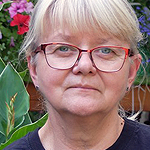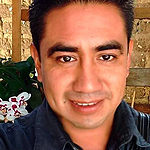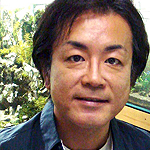Meanders of a forest stream, a tributary of the Chodelka River near Bełżyce, Poland
1st place in Biotope Aquarium Design Contest 2019
Poland. Bartłomiej Paśnik

Volume: 225 L
Dimensions: 150x50x30 cm
List of fishes: Gobio gobio, Orconectes limosus
List of plants: N/A
Description of decorations: For the decoration were used: limestone, sand, roots. the riverside was made of sand and epoxies. Making it from natural materials would not be permanent.
Description of equipment: filtration: unimax 250. Water circulator 2000l / h. 150W light. Aquael OXYPRO 150.
Water parameters: Temperature 17-22°C, pH 7,5, ppm 160.
Additional info: Water changes once a week 30%. In cold water aquariums, additional aeration of water is more important than low temperature. In cold water there is more oxygen, if we can not lower the temperature, we must provide more oxygen. (Aquael OXYPRO 150.)
INFORMATION ABOUT BIOTOPE
Description of the area surrounding the biotope: A small stream originating in forests to the southwest of the city of Bełżyce. These are mixed forests, the most common tree species are: Quercus, Carpinus betulus, Pinus silvestris, Alnus glutinosa. The biotope is located in a temperate cold climate. The driest month is January. There is a rainfall of 24 mm at this time. The greatest precipitation appears in July, with an average of 77 mm. July is the hottest month with the average temperature of 18.5 ° C. The lowest average temperature in the year occurs in the month of January and is about -5.6 ° C.
Description of the underwater landscape of the biotope: The stream’s sources flow from a small hill. The silty bottom is overgrown with algae. After about 20 meters, the bottom is covered with limestone and sand, the banks are overgrown with roots, mosses and dead wood.
Description of the parameters of the habitat: Transparent water, pH 7,57, ppm 179, temp. in summer 14-15 ° C
List of fishes and invertebrates occurring in the nature biotope: Barbatula barbatula, Gasterosteus aculeatus, Gobio gobio, Gammarus pulex, Orconectes limosus (Invasive species)
List of plants found in the nature biotope: Algae
Threats to the ecology: Due to global warming, the stream dries up. In the summer about 200m from the sources the depth of water was 1cm !!! Despite the harsh conditions, there are fish there, probably their last years in this biotope. Also people who ride off-road vehicles contribute to the destruction of the biotope. One of the local small miracles of nature dies.
Sources of information: I researched the biotope myself because there is no information about this river:
https://www.explorebiotope.
Comments of the members of the jury of Biotope Aquarium Design Contest 2019

At first, I felt this tank was on the borderline of capacity for the fish it contains (at their potential adult sizes), but the execution of the layout is second to none. The flow is apparent without being excessive, and the inhabitants are seen making the most of it. Ample shaded areas of cover provide refuge should the fish ever become spooked, and aside the negligible risk of a Gudgeon and crayfish altercation, there’s little that this tank does wrong.

Bartłomiej’s next great job. In Poland a lot of rivers looks as Chodelka River. Excellent selection of the ground, mapping the washed river bank. The aquarium has excellent light and perspective that creates the whole ideal climate found in rivers. An amazing tank.

Great setting, wonderful example to show an European habitat.

It is an incredible work recreating the banks of the stream. The roots entering the water look as real as in nature. The planted part is also very good, as it is seen in many bodies of water and the depth simulation helps a lot. Well done!

The brilliance of this biotope lies in its simplicity: a rough gravel bed along the undercut banks of a small stream. Moss-covered roots project down from deeply eroded sandy banks, providing cover for the fish and a kind of jungle gym for for the crayfish. The whole tank beautifully framed, with a clever faded grey background with ghostly. Indistinct overhanging roots receding into the distance mimicking the limits of our vision underwater. Fallen leaves and bits of organic debris tumbling in the current round out the impression. The fish school and forage as they would in the wild, while the crayfish clamber about the roots. This small-clawed species of crayfish does not appear to present any threat to the fish, and their lack of fear around it confirms this.

One of the best designs in this contest in my humble opinion. Interesting combination of species in a big enough tank. Excellent bottom structure. I would like to read a little bit more in the description, but TOP work!

The big highlight of this work is the use of roots, which provided functional spaces for aquatic animals, and beautiful and natural looking. All animals in the tank were active and calm.

Unfortunately I have never been to Poland and I don’t know the actual state of this river. But when I saw this work, perhaps.. no surely, I felt that there would be a scene like this. This is because such a real aquarium can only be expressed to those who know the local situation. The most noticeable thing is the contrast between the shadow of the shore and the white riverbed. This is beautiful as a color sensation and excellent as an ecological environment for fish.
